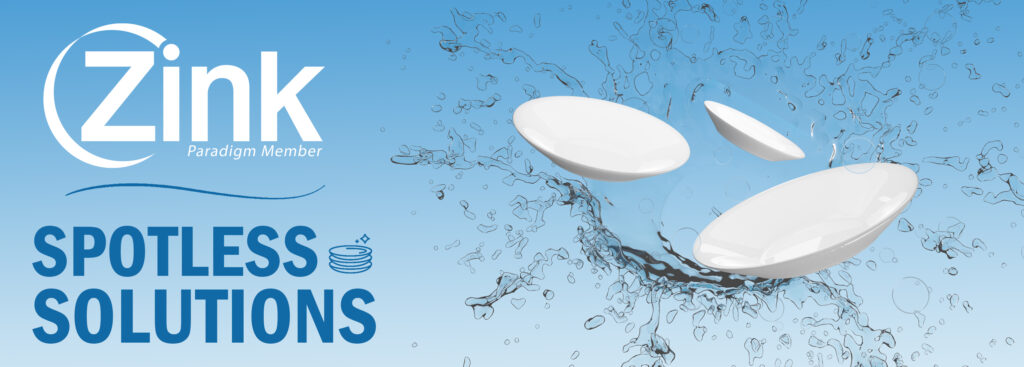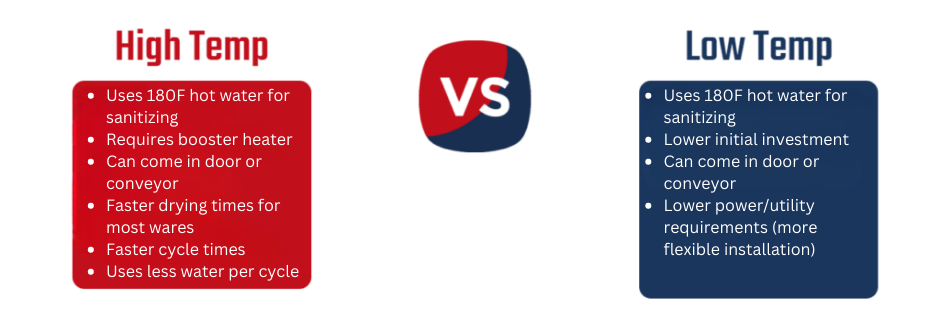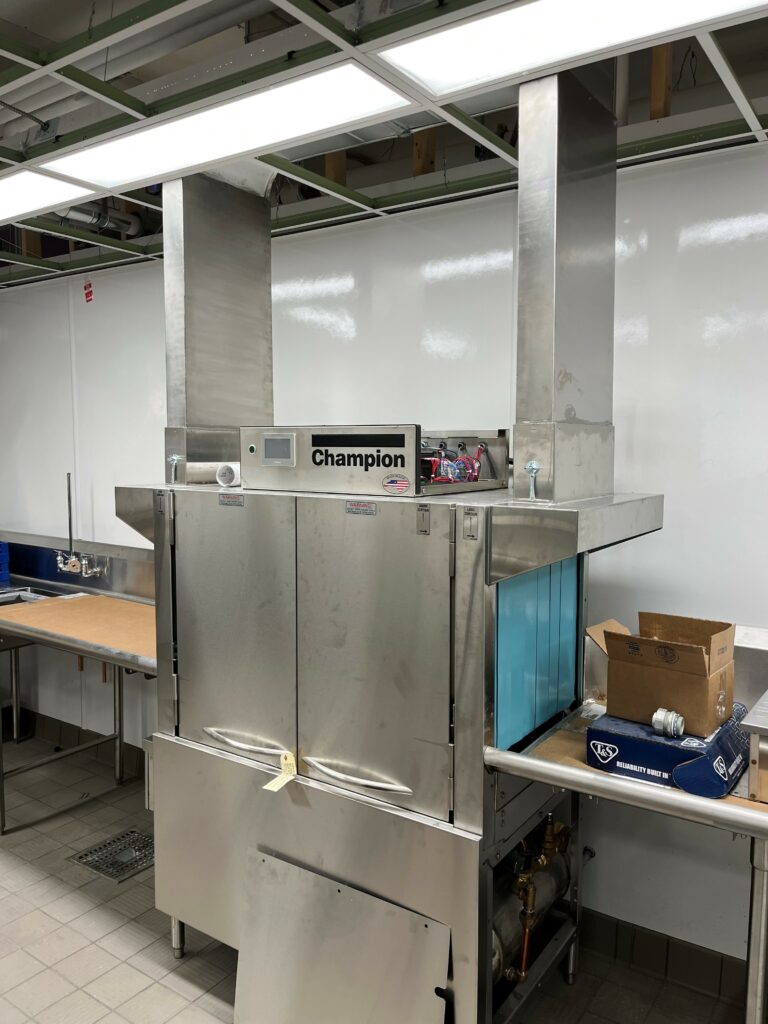
Choosing the Right Dishmachine: High-Temp vs. Low-Temp for Commercial Foodservice Operations
When it comes to running a successful foodservice operation, choosing the right dishmachine is of utmost importance. With two commonly available options – high-temp and low-temp dishmachines – it becomes essential to thoroughly understand the advantages and disadvantages associated with each. In this blog post, we will explore the proper dish and glassware handling and cleaning techniques in a commercial foodservice operation, and then delve into a detailed analysis of the pros and cons of high-temp and low-temp dishmachines. By considering factors such as sanitization effectiveness, energy efficiency, water consumption, chemical usage, power requirements, and ventilation needs, you can make an informed decision that aligns with the unique needs of your establishment.
Proper Dish and Glassware Handling and Cleaning Techniques: Before diving into the specifics of dishmachine options, let’s begin with a focus on the importance of proper dish and glassware handling and cleaning techniques in a commercial foodservice operation. Understanding and implementing these techniques will provide a foundation for comprehending how dishmachines can enhance the cleaning process and improve overall operational efficiency.
High-Temp Dishmachines: High-temp dishmachines utilize hot water for sanitization, offering superior cleaning results. Let’s explore the advantages and disadvantages of this option:
One of the significant advantages of high-temp dishmachines is their ability to provide superior sanitization. By utilizing hot water, typically around 180°F or 82°C, these machines effectively eliminate bacteria and ensure food safety. Furthermore, the heat from hot water aids in the drying process, reducing the need for additional energy-consuming drying components. This energy efficiency not only saves on utility costs but also leads to faster drying times, facilitating quicker turnover and increased operational efficiency. Moreover, high-temp dishmachines rely solely on heat for sanitization, eliminating the risk of chemical residue on dishware.
While high-temp dishmachines offer remarkable cleaning results, they do have some downsides. The use of hot water increases energy consumption, resulting in higher utility bills. Additionally, these machines require a continuous supply of hot water, leading to greater water consumption. Moreover, high-temp dishmachines generally come with a higher initial cost compared to their low-temp counterparts.
Low-Temp Dishmachines: Low-temp dishmachines present an alternative option with their own set of advantages and considerations. Let’s examine them:
One of the primary advantages of low-temp dishmachines is their cost-effectiveness. These machines typically have a lower purchase price, making them more budget-friendly, especially for smaller operations or those with limited resources. Additionally, low-temp dishmachines reduce energy consumption by eliminating the need to heat water to high temperatures. This results in lower utility costs and greater energy efficiency. Furthermore, these machines use less water overall since they do not require a constant supply of hot water. Lastly, low-temp dishmachines produce less steam, simplifying ventilation requirements and reducing the need for extensive ventilation systems.
While low-temp dishmachines offer cost and energy-saving benefits, they do have certain drawbacks. Achieving proper sanitization in low-temp dishmachines can require longer wash cycles due to the use of chemical sanitizers. This can result in increased washing time and potentially impact operational efficiency. Additionally, the use of chemical sanitizers requires diligent monitoring and refilling, adding to ongoing expenses. If not properly rinsed or if the sanitizer concentration is not accurately maintained, chemical residue may be left on dishes. Furthermore, low-temp dishmachines often require separate drying equipment, which can increase energy consumption and initial costs.

Power Requirements
When choosing between high-temp and low-temp dishmachines, it’s crucial to consider their specific power requirements. High-temp machines typically require higher electrical power due to heating elements, while low-temp machines require less power but may need additional equipment for drying. Assessing your establishment’s power capabilities and limitations will help in making an appropriate selection.
Another critical factor to consider is ventilation. High-temp dishmachines produce more steam during operation, necessitating more robust ventilation systems to remove excess moisture and maintain a comfortable working environment. On the other hand, low-temp dishmachines generate less steam, reducing the need for extensive ventilation.
Ventilation
Selecting the right dishmachine for your commercial foodservice operation requires a comprehensive evaluation of various factors. By considering budget, energy consumption, drying requirements, chemical usage, power requirements, and ventilation capabilities, you can make an informed decision that best suits your establishment’s unique needs. High-temp dishmachines offer superior sanitization and faster drying times, but at the cost of higher energy and water consumption. Low-temp dishmachines, on the other hand, provide cost-effectiveness and reduced water consumption, but may require longer wash cycles and additional drying equipment. Properly assessing these pros and cons will enable you to make a choice that enhances dishware handling, cleaning techniques, and overall operational efficiency.
At Zink Foodservice, we understand the significance of selecting the right equipment for your foodservice operation. Contact us today to explore our wide range of dishmachines and receive expert guidance in making the perfect choice for your business. Together, we can elevate your dishware handling and cleaning processes, ensuring excellence in every step of your foodservice operation.

